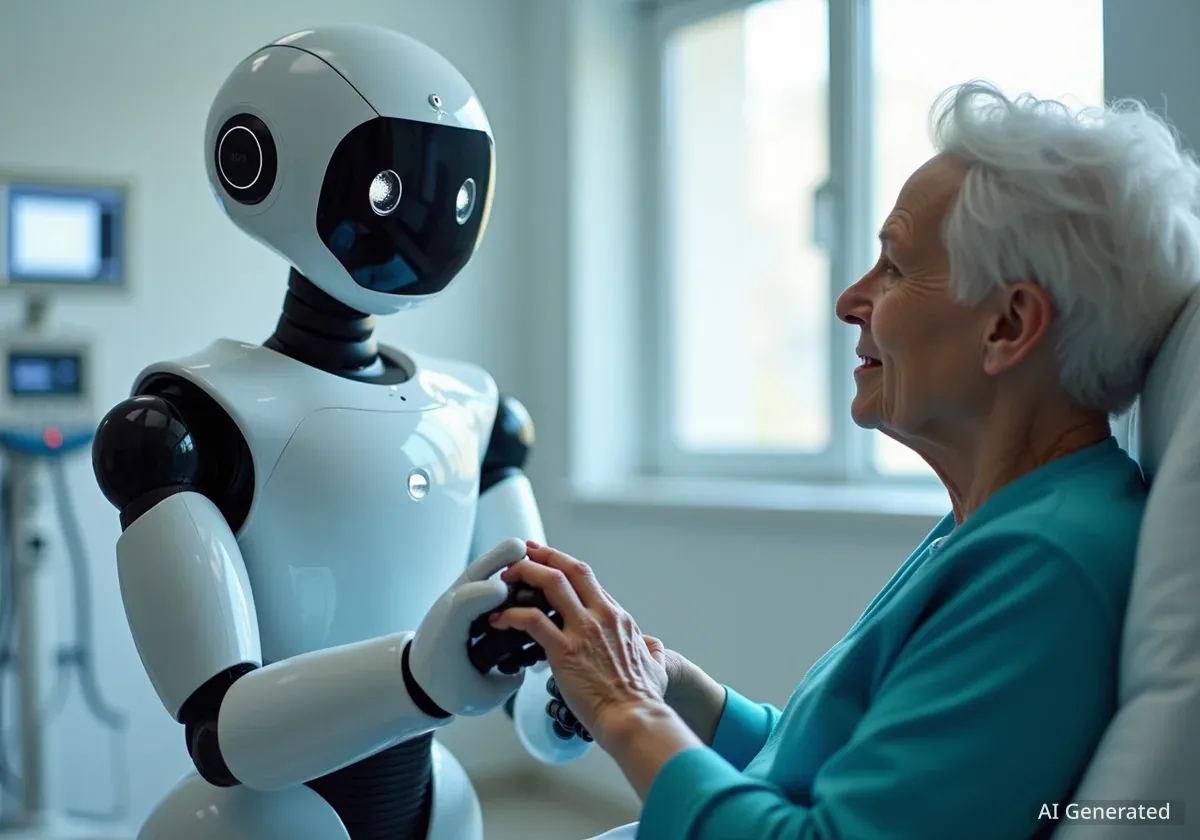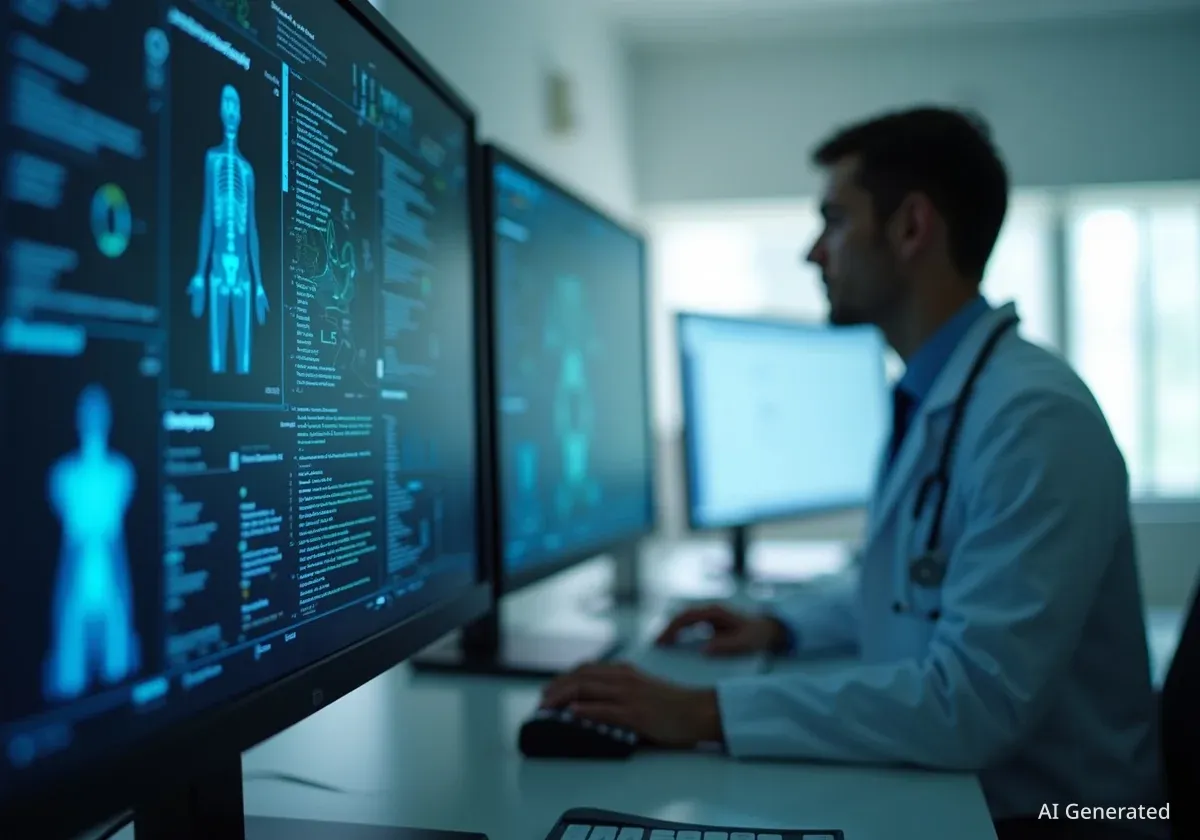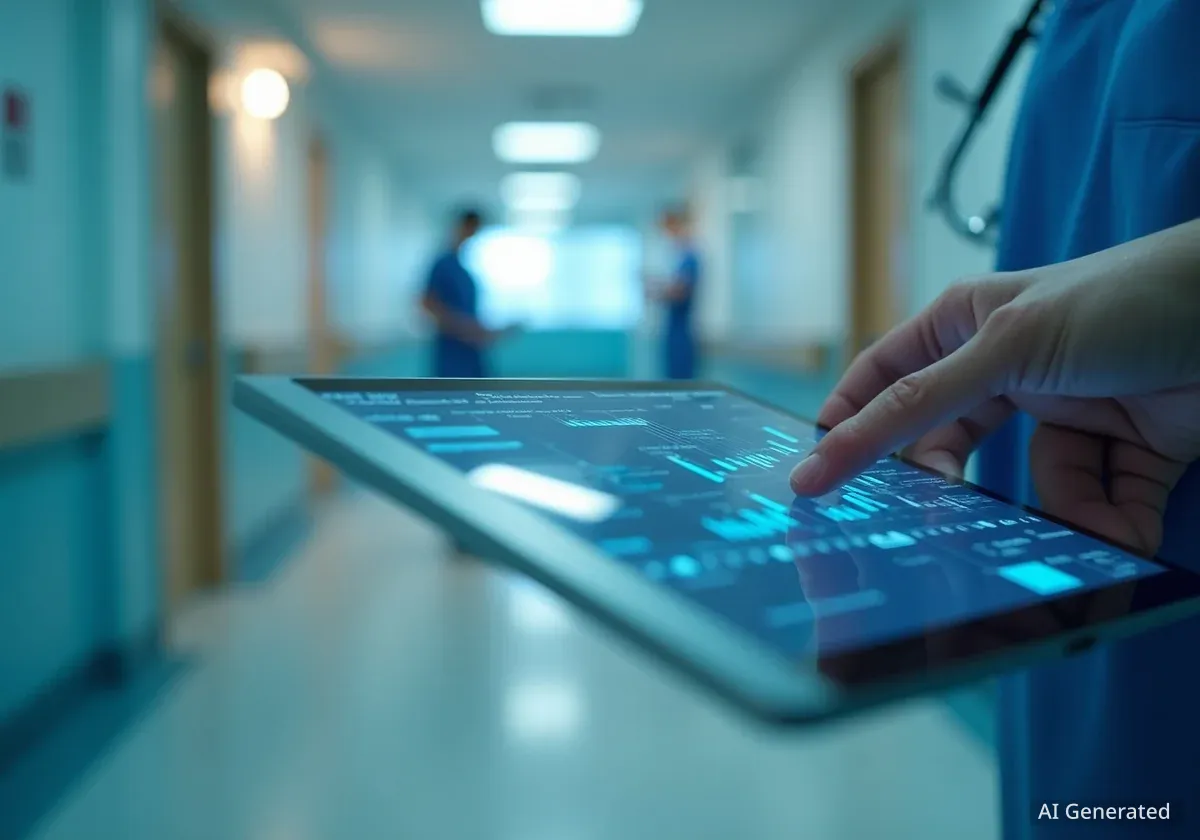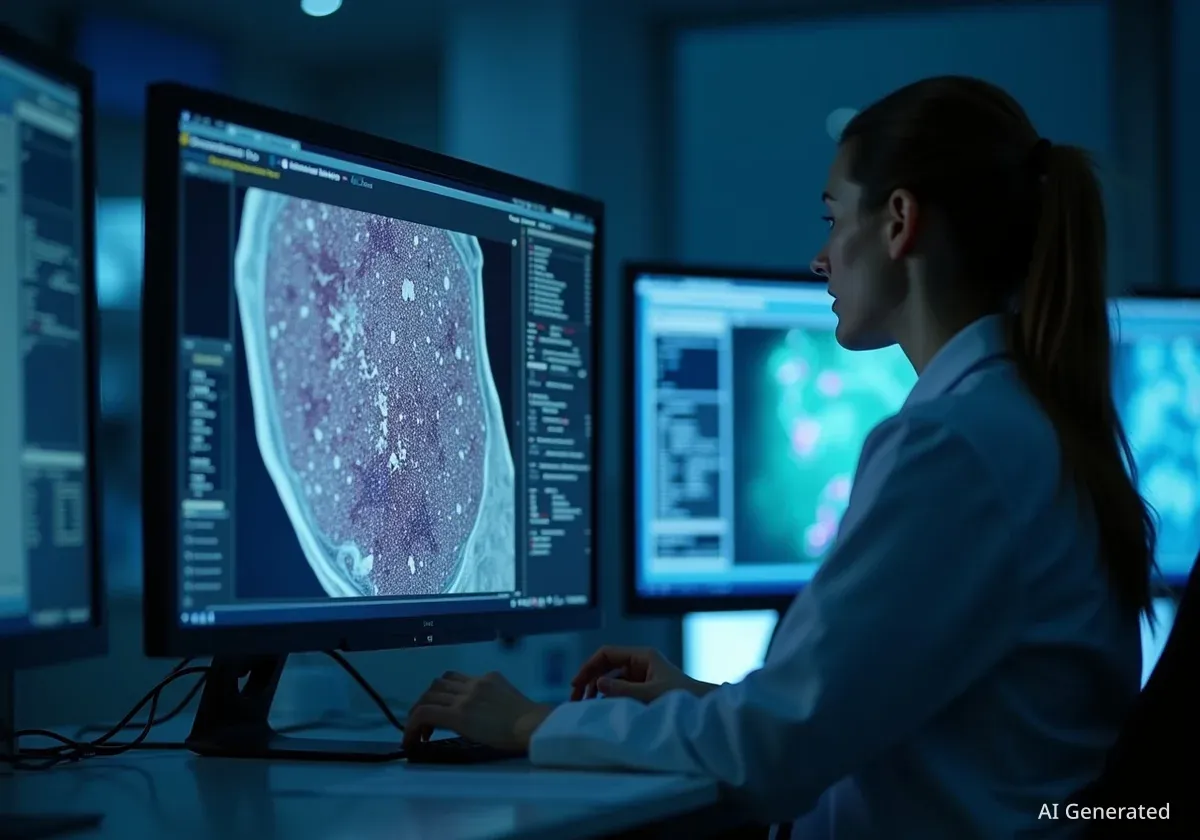An artificially intelligent robot named Robin is now operating in 30 healthcare facilities across the United States, offering emotional support to pediatric patients and residents in nursing homes. The 4-foot-tall robot, designed by Expper Technologies, aims to reduce patient loneliness and help alleviate the workload on medical staff facing significant shortages.
Robin engages patients with personalized interactions, games, and companionship. It is currently deployed in hospitals and care centers in California, Massachusetts, New York, and Indiana, marking a growing trend of integrating AI into direct patient care.
Key Takeaways
- Robin is an AI-powered therapeutic robot used in 30 U.S. healthcare facilities for emotional support.
- The robot interacts with children in pediatric units and elderly residents in nursing homes.
- It operates with a combination of AI autonomy (30%) and remote human supervision.
- The technology is designed to help address healthcare staffing shortages without replacing human workers.
- Future plans for Robin include monitoring patient vitals and assisting with basic physical tasks.
A New Kind of Patient Companion
In pediatric wards, Robin the Robot is becoming a familiar presence. For 6-year-old Luca, a leukemia patient at UMass Memorial Children’s Medical Center, an encounter with the robot was a source of unexpected joy. His mother, Meagan Brazil-Sheehan, recalled how her son's face lit up when Robin recognized him in the hallway and greeted him by name.
The robot is programmed with a voice that sounds like a 7-year-old girl, creating a peer-like connection with young patients. It can remember individuals, their favorite songs, and past conversations. At HealthBridge Children’s Hospital in Orange County, California, Robin played a teenager's favorite song and danced with him. It also played a simplified game of tic-tac-toe with another patient.
Samantha da Silva, a speech language pathologist at the hospital, noted the positive effect Robin has on children. "She brings joy to everyone," da Silva said. "She walks down the halls, everyone loves to chat with her, say hello."
Tailored Support for Different Needs
Robin's interactions are not limited to entertainment. The robot is also used as a tool to help children cope with difficult medical procedures. When Luca needed an IV, a child life specialist used Robin to explain the process. The robot played a cartoon showing it receiving an IV, which helped demonstrate the procedure in a non-threatening way.
In nursing homes, Robin's role shifts to address the needs of elderly residents. It engages individuals with dementia in memory games, leads breathing exercises, and provides companionship. In one instance at a Los Angeles facility, a resident having a panic attack specifically asked for Robin. The robot played songs by Elvis Presley and showed videos of puppies—the resident's favorites—until she calmed down.
The Technology Behind Robin
Robin was developed by Expper Technologies, a company led by CEO Karen Khachikyan. He explained that the robot is designed to fill an emotional gap in patient care that over-extended medical staff often cannot address.
"Nurses and medical staff are really overworked, under a lot of pressure, and unfortunately, a lot of times they don’t have capacity to provide engagement and connection to patients," Khachikyan said. "Robin helps to alleviate that part from them."
The robot's design is intentional. Its sleek, triangle-shaped white body was made to be huggable, and a large screen displays expressive, cartoon-like facial features. Robin can mirror the emotions of the person it interacts with, laughing along with a happy patient or showing a sad face to convey empathy.
Currently, Robin is about 30% autonomous. The remaining 70% of its functions are controlled by a team of remote operators who work under the supervision of clinical staff. This hybrid model ensures interactions are appropriate and safe while allowing the AI to learn and improve.
With each interaction, the system collects data to enhance its artificial intelligence. Khachikyan emphasized that all data collection is compliant with the Health Insurance Portability and Accountability Act (HIPAA), ensuring patient privacy. The ultimate goal is for Robin to function with greater independence.
Addressing the Healthcare Staffing Crisis
The introduction of robots like Robin comes at a critical time for the U.S. healthcare system. The Association of American Medical Colleges projects a significant workforce deficit in the coming years, highlighting the need for innovative solutions.
Projected Physician Shortage
According to the Association of American Medical Colleges, the United States is expected to face a shortage of up to 86,000 physicians by 2036. Technologies like AI and robotics are being explored to help fill critical gaps in patient care and administrative tasks.
Khachikyan's vision for Robin extends beyond emotional support. The company is actively developing new capabilities for the robot. Future versions may be able to measure patients' vital signs and report the data directly to their medical team. Long-term ambitions include designing Robin to assist elderly patients with physical tasks, such as changing clothes or moving to the bathroom.
"Our goal is to design the next evolution of Robin; that Robin will take more and more responsibilities and become even more essential part of care delivery," Khachikyan stated. He clarified that the objective is not to replace healthcare workers but to supplement their efforts and manage the growing demands on the system.
The Development and Evolution of Robin
The idea for Robin originated from Khachikyan's personal experiences with loneliness during his childhood in Armenia. While pursuing his Ph.D., he set out to build a robot that could serve as a friend. After exploring various applications, an investor suggested that pediatric hospitals would be an ideal environment due to the stress and isolation often experienced by young patients.
The team first tested the concept at a pediatric hospital in Armenia. Following its success, they launched a pilot program in 2020 at UCLA Mattel Children’s Hospital in the United States.
Robin's personality has been shaped significantly by its users. The development team paid close attention to how children responded to different programmed answers and behaviors. For example, when asked about its favorite animal, the robot initially answered with "dog" or "cat." However, when they programmed the answer to be "chicken," children found it hilarious. That response became a permanent part of its character.
"We created Robin’s personality by really taking users into the equation," Khachikyan explained. "So we often say that Robin was designed by users."





